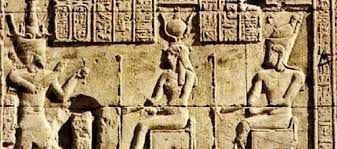Sanakht: The Pharaoh of Power and Ambition in Ancient Egypt
Sanakht, also known as Nebka, was an ancient Egyptian pharaoh who ruled during the Third Dynasty of the Old Kingdom. His reign, which lasted from approximately 2686 BCE to 2667 BCE, was marked by his ambitious projects, military campaigns, and efforts to consolidate power. In this article, we will delve into the life, achievements, and legacy of Sanakht, shedding light on his significant contributions to ancient Egyptian history.
Since little data can be gotten from just two seals where Sanakht is portrayed, any substantial reality about his parentage or his experience growing up life is as yet unclear. Manetho guaranteed that Sanakht was the establishing ruler of the Third Tradition of the Old Realm, yet a couple of ongoing revelations from Abydos go against this hypothesis. As a result of them, Khasekhemwy is thought to be the pioneer leader of the Third Tradition and the ancestor of Djoser, the second leader of this line. Thus, numerous history specialists currently accept that Sanakht really turned into the Pharaoh in the later piece of the Third Line, after the rule of Djoser, as opposed to being the organizer.
A few history specialists accept that Sanakht wedded Sovereign Nimaethap, who may be the girl of Pharaoh Khasekhemwy. Without even a trace of substantial verification, a few researchers recommend that Djoser was the child of Sanakht and Nimaethap, while others assume that Djoser may be the more youthful sibling of Sanakht. As may be obvious, there is an absence of lucidity even today about the genealogy and progression of pharaohs around the hour of Sanakht .
1. Ascension to the Throne:
Sanakht succeeded his father, Pharaoh Khasekhemwy, and continued his legacy of strong leadership. Upon ascending the throne, Sanakht sought to expand and consolidate his kingdom, asserting his authority over the land of Egypt.
2. Military Campaigns:
Sanakht's reign was characterized by his military prowess and ambition for territorial expansion. He conducted military campaigns in various regions, including the Sinai Peninsula and Nubia, showcasing his determination to extend Egypt's influence beyond its borders. These campaigns aimed to secure valuable resources, establish trade routes, and reinforce his position as a powerful ruler.
3. Pyramid Construction:
As a testament to his authority and divine status, Sanakht embarked on the construction of his own pyramid. Although his pyramid remains uncompleted, the effort and resources invested in its construction highlight his desire to leave a lasting legacy. The pyramid complex at Saqqara, dedicated to Sanakht, stands as a testament to his ambition and the architectural achievements of TheThird Dynasty .
4. Administrative Reforms:
Sanakht implemented administrative reforms to strengthen the central government and ensure efficient governance. He established a bureaucracy of officials responsible for overseeing various aspects of the kingdom, including taxation, justice, and trade. These reforms aimed to streamline the administration, maintain law and order, and enhance the economic stability of Egypt.
5. Religious Significance:
Like other pharaohs of ancient Egyptian , Sanakht was considered a divine ruler, responsible for maintaining the cosmic order and ensuring the prosperity of his people. He actively participated in religious rituals and oversaw the construction and restoration of temples dedicated to the gods. Sanakht's religious devotion reinforced his legitimacy as a pharaoh and his role as an intermediary between the mortal realm and the divine.
6. Legacy and Influence:
Sanakht's reign left a lasting impact on ancient Egyptian . His military campaigns expanded Egypt's influence and secured valuable resources, contributing to the wealth and power of the kingdom. His administrative reforms and pyramid construction set a precedent for future pharaohs and showcased the ambition and grandeur of ancient Egyptian rulers.
Insights regarding Sanakht's Rule
As per the records of the Egyptian antiquarian Manetho and the Turin Ruler Rundown, Sanakht governed Egypt for a very long time, albeit not a single additional data has yet in sight on his rule. Consequently, the subtleties of his exercises as a ruler are as yet unclear, notwithstanding a few unearthings sent off in Sinai. A few reliefs found from the Sinai show that a couple of undertakings were done during Sanakht's rule. They were finished to extricate the mineral assets of the adjoining lands, chiefly turquoise, which was viewed as a very valuable stone around then.
The Burial place Of Sanakht
The specific area of the burial place of Sanakht can't be determined because of an absence of proof. In any case, numerous antiquarians accept that Mastaba K2 is really his burial place, as just relics bearing his name have been viewed as here. Nonetheless, a few Egyptologists hold the possibility that this mastaba was utilized as the internment spot of any senior court official or a ruler. This gigantic mastaba is arranged in Beit Khallaf, a little town in Center Egypt and contains the skeletal remaining parts of an extremely enormous estimated man from ancient Egypt, which is believed to be of Sanakht himself. An incomplete burial chamber design toward the west of the pyramid of Djoser is additionally viewed as the burial place of Sanakht by a few present day researchers.
Sanakht, the pharaoh of power and ambition, played a significant role in shaping the history of ancient Egypt. His military campaigns, administrative reforms, and dedication to religious practices left a lasting legacy. Despite the unfinished state of his pyramid, Sanakht's reign symbolizes the determination and ambition of the pharaohs of the Old Kingdom. His contributions to ancient Egyptian history serve as a testament to the grandeur and enduring legacy of this remarkable civilization.


